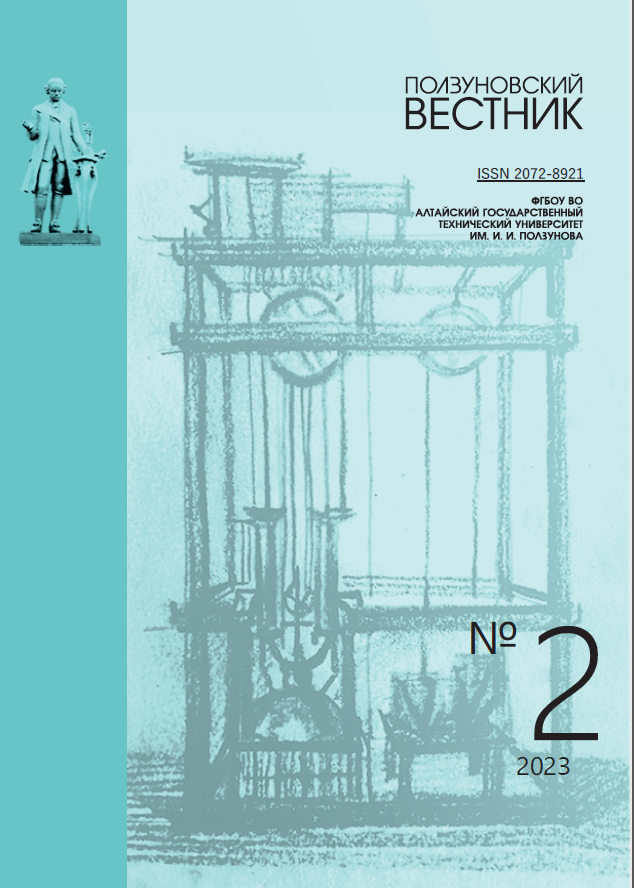INVESTIGATION OF THE POSSIBILITY OF USING HYDROLYZED COLLAGEN IN PROCESSED CHEESE TECHNOLOGY
YJGERO
DOI:
https://doi.org/10.25712/ASTU.2072-8921.2023.02.002Keywords:
processed cheese, hydrolyzed collagen, sunflower lecithin, wheat bran, enrichment, rheology, technolog-ical process, processed cheese recipeAbstract
The possibility of expanding the range of processed cheeses by introducing hydrolyzed collagen, sunflower lecithin, wheat bran into the formulation has been studied. Hydrolyzed collagen is a group of low molecular weight peptides, which have antioxidant and antimicrobial activity, are able to attach calcium ions, contributing to an increase in its bioavailability. Wheat bran is a source of dietary fiber. Sunflower lecithin is rich in phospholipids, which have a proven antioxidant effect and are, along with dietary fibers, functional food ingredients.
The article presents the technological process of producing experimental samples of processed cheese with a description of the main raw materials. A detailed recipe for making a mixture for melting is given. The indicators of the obtained experimental samples of processed cheese are described.
It was found that the addition of collagen increased the viscosity of the cheese, but practically did not provide strength properties, while processed cheese with collagen is characterized by high adhesion.
As a result, the technology of processed pasty cheese enriched with natural collagen in an easy-to-digest hydrolyzed form, sunflower lecithin and wheat bran has been developed. The introduction of hydrolyzed collagen increases the protein content in the finished product almost twice as compared to the control sample, wheat bran enriches cheese with dietary fibers, lecithin is a source of phospholipids.
Regulatory documentation has been developed and approved for the new cheese.
References
León-López A., Morales-Peñaloza A., MartínezJuárez V.M., Vargas-Torres A., Zeugolis D.I., Aguirre-Álvarez G. Hydrolyzed Collagen – Sources and Applications // Molecules. – 2019. – 24(22): 4031. https://doi.org/10.3390/molecules24224031.
Gelse K., Pöschl E., Aigner T. Collagens –structure, function, and biosynthesis // Advanced drug delivery reviews. – 2003. – Т. 55. – № 12. – С. 1531-1546. https://doi.org/10.1016/j.addr.2003.08.002.
Hays N. P. [et al]. Effects of whey and forti-fied collagen hydrolysate protein supplements on nitrogen balance and body composition in older women // Journal of the American dietetic associa-tion. – 2009. – Т. 109. – № 6. – С. 1082‒1087. https://doi.org/10. 1016/j.jada.2009.03.003.
Zorrilla García A. E. El envejecimiento y el estrésoxidativo // Revistacubana de investigaciones Biomédicas. – 2002. – Т. 21. – № 3. – С. 178‒185.
Varani J. [et al]. Decreased collagen produc-tion in chronologically aged skin: roles of age-dependent alteration in fibroblast function and defec-tive mechanical stimulation // The American journal of pathology. – 2006. – Т. 168. – № 6. – С. 1861‒1868. https://doi.org/10.2353/ajpath.2006.051302.
Baumann L. Skin ageing and its treatment // The Journal of Pathology: A Journal of the Patholog-ical Society of Great Britain and Ireland. – 2007. – Т. 211. – № 2. – С. 241‒251. https://doi.org/10.1002/path.2098.
Gómez-Guillén M. C. [et al]. Functional and bioactive properties of collagen and gelatin from alternative sources: A review // Food hydrocolloids. – 2011. – Т. 25. – № 8. – С. 1813‒1827. https://doi.org/10.1016/ j.foodhyd.2011.02.007.
Najafian L., Babji A. S. A review of fish-derived antioxidant and antimicrobial peptides: Their production, assessment, and applications // Peptides. – 2012. – Т. 33. – № 1. – С. 178–185. https://doi.org/ 10.1016/j.peptides.2011.11.013.
Santana R. C. [et al]. Emulsifying properties of collagen fibers: Effect of pH, protein concentration and homogenization pressure // Food Hydrocolloids. – 2011. – Т. 25. – № 4. – С. 604‒612. https://doi.org/ 10.1016/j.foodhyd.2010.07.018.
Guo L. [et al]. In vitro assessment of the multifunctional bioactive potential of Alaska pollock skin collagen following simulated gastrointestinal digestion // Journal of the Science of Food and Agri-culture. – 2015. – Т. 95. – № 7. – С. 1514‒1520. https://doi.org/ 10.1002/jsfa.6854.
Pal G. K., Suresh P. V. Sustainable valorisa-tion of seafood by-products: Recovery of collagen and development of collagen-based novel functional food ingredients // Innovative food science & emerg-ing technologies. – 2016. – Т. 37. – С. 201‒215. https://doi.org/10.1016/j.ifset.2016.03.015.
Pei X. [et al]. Marine collagen peptide iso-lated from Chum Salmon (Oncorhynchus keta) skin facilitates learning and memory in aged C57BL/6J mice // Food Chemistry. – 2010. – Т. 118. – № 2. – С. 333‒340. https://doi.org/10.1016/j.foodchem.2009.04.120.
Znamirowska A., Szajnar K., Pawlos M. Probiotic Fermented Milk with Collagen // Dairy. – 2020. № 1. – С. 126‒134. https://doi.org/10.3390/ dairy1020008.
Walrand S., Chiotelli E., Noirt F., Mwewa S., Lassel T. Consumption of a functional fermented milk containing collagen hydrolysate improves the concentration of collagen-specific amino acids in plasma // J Agric Food Chem. – 2008. – № 56(17):7790-5. https://doi.org/10.1021/jf800691f.
León-López A., Pérez-Marroquín X.A., Campos-Lozada G., Campos-Montiel R.G., Aguirre-Álvarez G. Characterization of Whey-Based Fer-mented Beverages Supplemented with Hydrolyzed Collagen: Antioxidant Activity and Bioavailability // Foods. – 2020. – Т. 12. – № 9(8):1106. https://doi.org/10.3390/ foods9081106.
Мусина О. Н., Усатюк Д. А., Нагорных, Е. М. Исследование возможности расширения ас-сортимента обогащенных плавленых сыров // Ползуновский вестник. 2022. ‒ № 1(4). ‒ С. 121‒125. https://doi.org/10.25712/ASTU.2072-921.2022.04.015.
Технический регламент Таможенного союза «О безопасности молока и молочной продукции» (ТР ТС 033/2013). – URL: https://docs. cntd.ru/document/499050562/ (дата обращения: 14.01.2023).
Downloads
Published
How to Cite
Issue
Section
License
Copyright (c) 2023 Olga N. Musina, Elena M. Nagornyh, Daria A. Usatyuk, Nina I. Bondarenko

This work is licensed under a Creative Commons Attribution 4.0 International License.















 .
. This work is licensed under a
This work is licensed under a 
